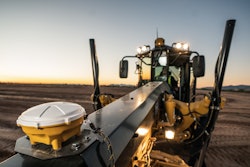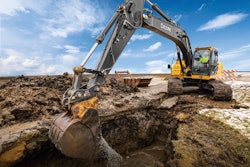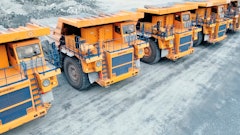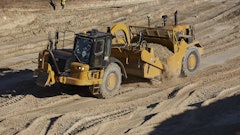
To move from reactive to proactive management, commercial general contractor Kitchell invested in Procore’s cloud project management software in 2018. The firm normally works 30 to 50 building projects across the western United States ranging in size up to $600 million – more than half of them are complex healthcare and higher education projects – and they wanted to use the terabytes of data each throwing off to predict project safety and quality. Carl McFarland, market sector executive at the Arizona-based firm’s Technology & Venture Development group, says Procore’s promise of a coming financial-management application was also particularly exciting because the firm wanted to drive toward more consistent and accurate financial forecasts.
“It was incredible how much time and resources we spent doing forecasts on spreadsheets,” McFarland says. “We had 12 or 15 different versions [of the spreadsheets] across the organization that project managers used. Each month, if you were a project director and you had six project managers, you’d have to look at six forecasts in six different formats. There were a lot of inconsistency.”
Forecasts in line with project management
The new Procore financial-package that emerged, called Monitored Resources, draws on consistent project management data. It brings a uniform level of detail, presented in a uniform format, to financial forecasts that dramatically improves the accuracy of the projections driving Kitchell’s business tactics.
Procore’s Monitored Resources improves the accuracy of forecasts by taking into account the current pace and scheduled phases of the project during the forecast period.
“Procore is giving us a tool that gives us options for what the distribution curve looks like,” says McFarland. “Because those costs are going to be spread out over time in a different way – they’re not just linear. Even if they're not down to a level of exact precision, the forecast is far more accurate than some of the guesstimating that's been done with spreadsheets.”
McFarland points out the value of forecast accuracy to both Kitchell and its clients.
“Let's say we've just signed a $15 million contract. In the past, we would have to take that schedule of values, put it into a spreadsheet, and approximate what we think the billing curve would look like over the 18 or 24 months of the project. With advanced forecasting, we can project that billing curve on a line-item basis, and come to an even more accurate prediction of the billing the owner can expect to get over time.”
Better tactical forecasts unlock predictive analytics
Improved forecasting is pushing a paradigm shift Kitchell is engineering on a much larger scale. McFarland’s operations technologies group keeps in mind an axiom that transparency and consistency promote accountability. And, ultimately, that should lead to accuracy and certainty.
“We've seen that in some other areas of the business. That's really what we're seeing across the board as we continue to build those forecasting processes that were once done offline into a more structured and formal process right in our budgets.”
Consistently structured financial data in a cloud database offers Kitchell an opportunity to do some 21st Century number crunching with potentially huge payoffs.
“We're layering this structured data with some outside resources that are starting to use predictive analytics to look at huge data sets and learn things that the individual data streams will never say. For example: ‘If you're X percent through the project with a contingency spend on Y, there is a X percent probability that you're going to experience fee erosion.’
“We're finally in the predictive side of safety. I've seen some modeling of our data there, and it has validated that it does work. It's not going to replace our decision making; it's simply going to enhance our ability to make smarter decisions.
“That's why we think it's important we continue to adopt these new tools – because it will provide us with more structure around our data. And the more organized, clean and accurate the data is the better position we're in to be able to predict and leverage it.”
Especially in the area of construction-firm financials, McFarland thinks forecasting certainty is more important than ever.
“We are faced with having to invest dollars in areas we've never had to invest in before. We're having to invest in technology research and development. Better accuracy should ultimately produce better income results – happier customers – and therefore should produce more free cash flow to invest in the tools necessary to advance the business and better serve our clients.”
McFarland connects the value these task-level tools offer with helping make macro changes at the company, and even the industry, level. Kitchell's Carl McFarland says accuracy in project forecasting can improve margins enough to support process investments such as the company's stake in a prefab business.Kitchell
Kitchell's Carl McFarland says accuracy in project forecasting can improve margins enough to support process investments such as the company's stake in a prefab business.Kitchell
Kitchell, for example, has invested in off-site prefabrication of building components.
“It takes less resources, less labor, so it's helping solve the labor issue. It's safer, putting fewer people in fall or other types of hazards. Quality is better because you're indoors, you're not exposed to climate issues. And technologies are improving visibility to the supply chain.
“I would say online shopping is to retail what offsite prefabrication will be to the construction industry.
From projections to paradigm shift
“General contractors, trade contractors, suppliers – we're all going to need a better understanding of our overall financial performance to figure out how we're going to adapt to all of these changes coming to the industry.”
And that’s the line McFarland draws between contractors’ financial forecasting and the future of the construction industry.
“I think this era of company leadership is going to have the most difficult and greatest opportunity of any leadership team in the last 100 years because we're not going to be able to rely solely on our experience within our business to be able to move the next generation forward. We're going to have to learn to rely on our expertise in organizational change management to adapt to a new ways of doing business. I think that that's very difficult for us as leaders, because we're all kind of uncomfortable there. For example, few industry leaders are experts in the digitization of business. They're not experts in offsite prefabrication, or any of these other things disrupting our industry. We don't have 30 years of experience in these spaces, so we're relying on the up and coming people and talent outside of our industry who have that expertise.
“I think the vast majority of our time and effort is spent on changing the culture and getting people to believe that there is a better way and being strategic about it.”





















